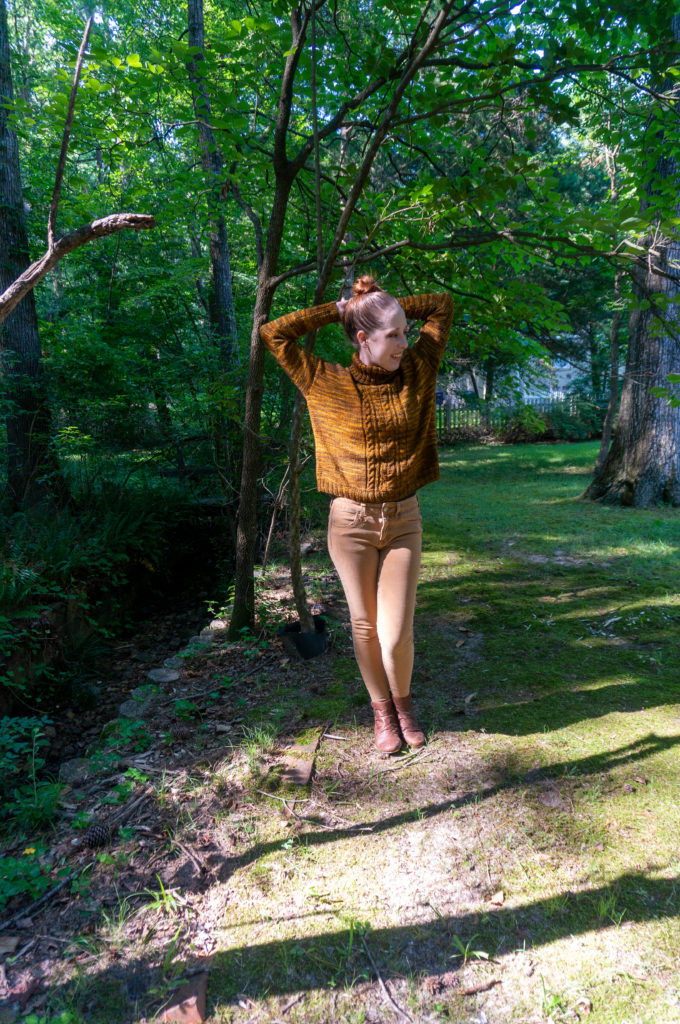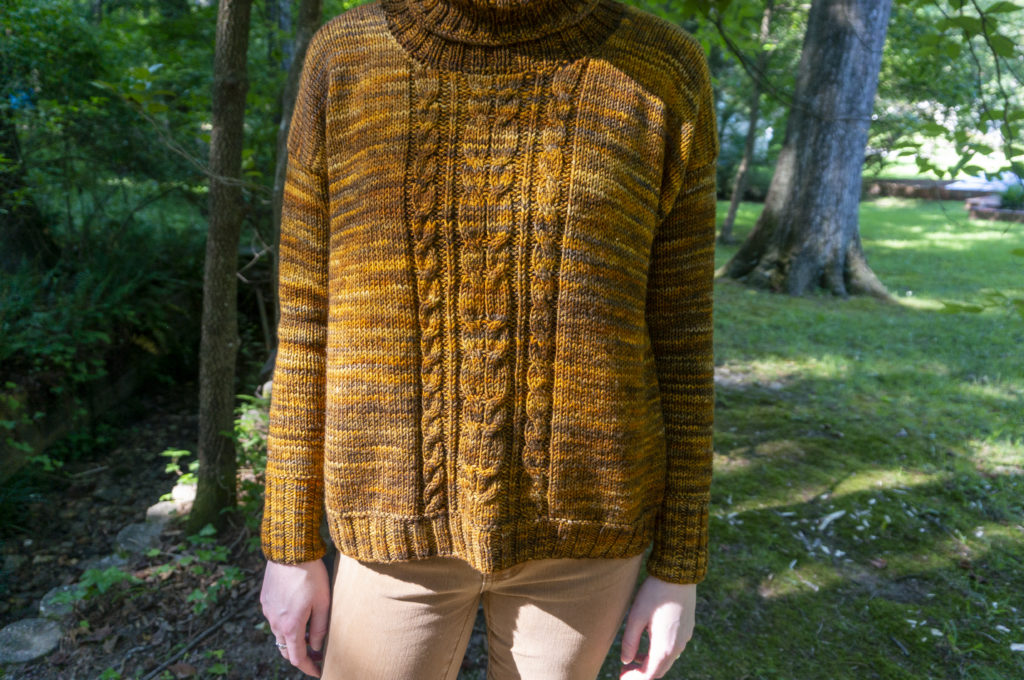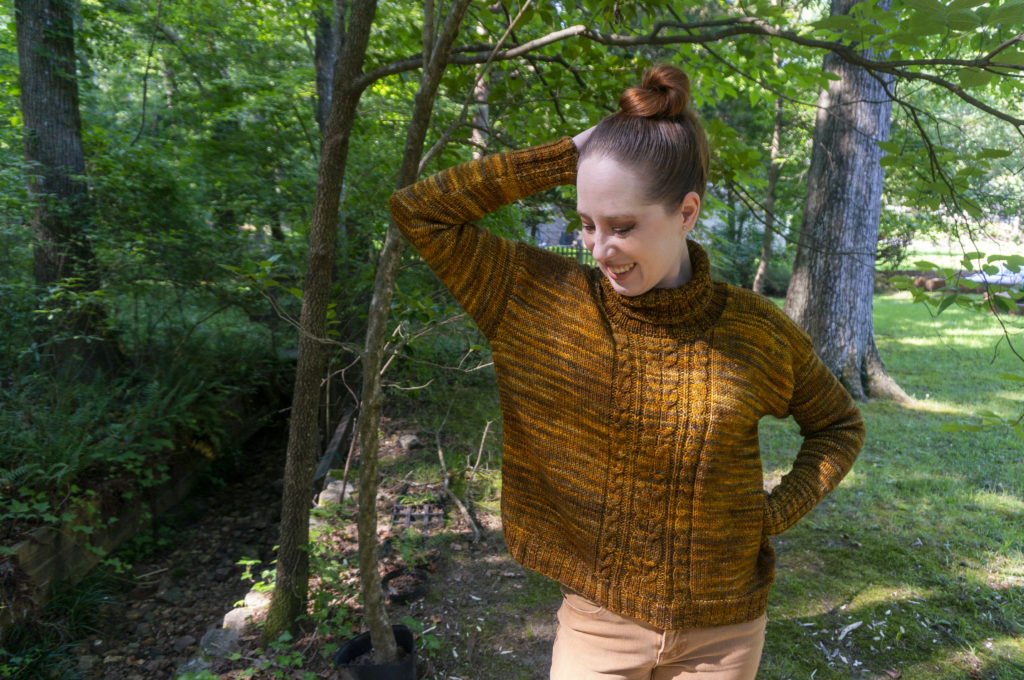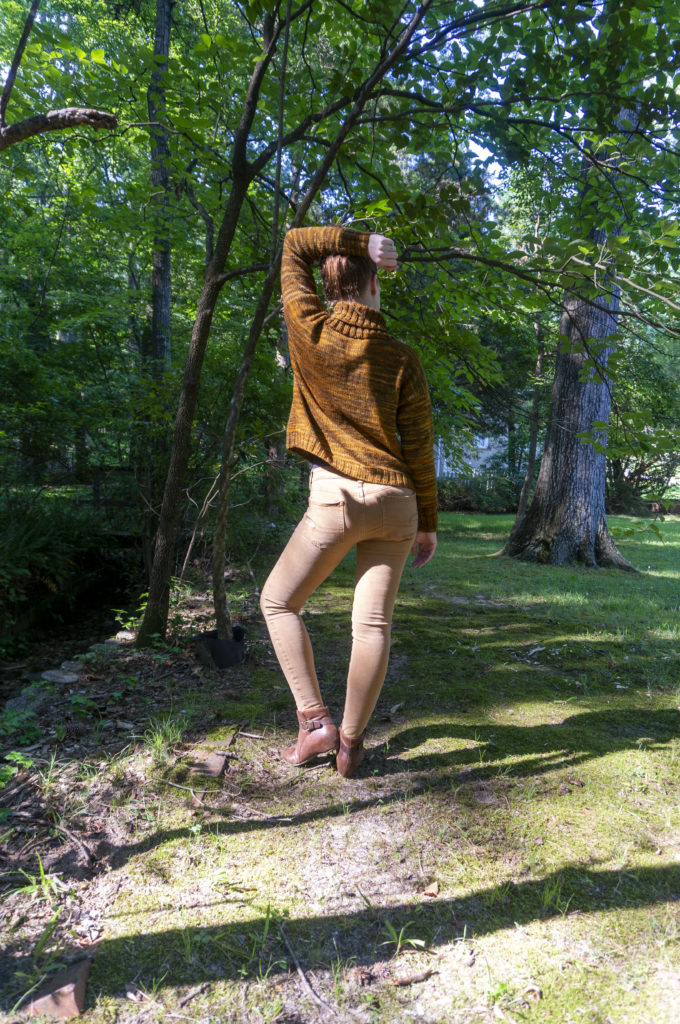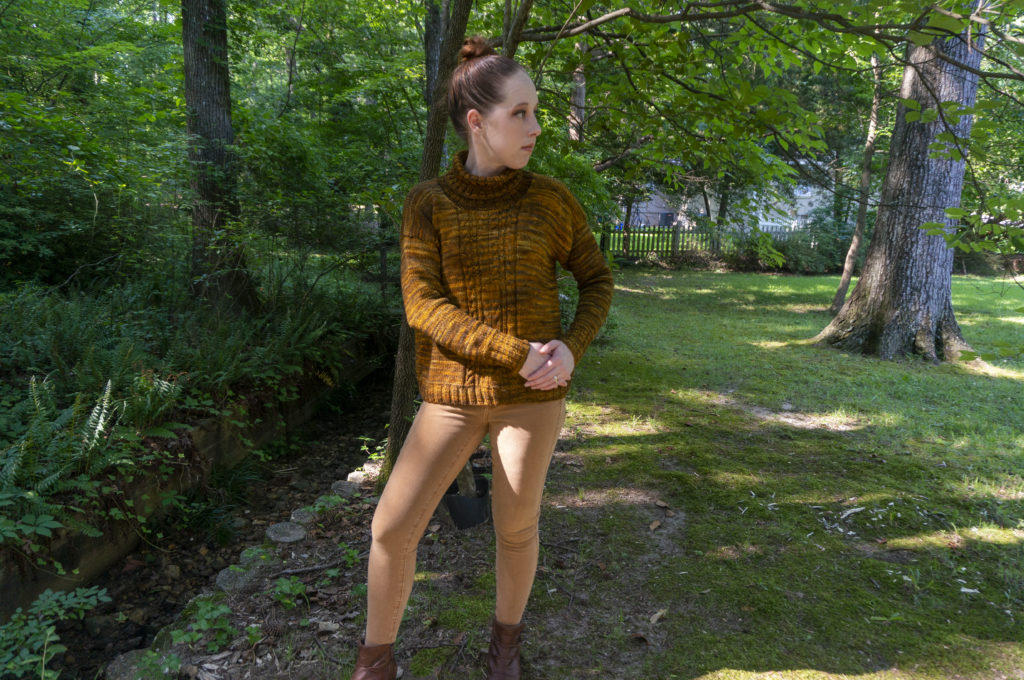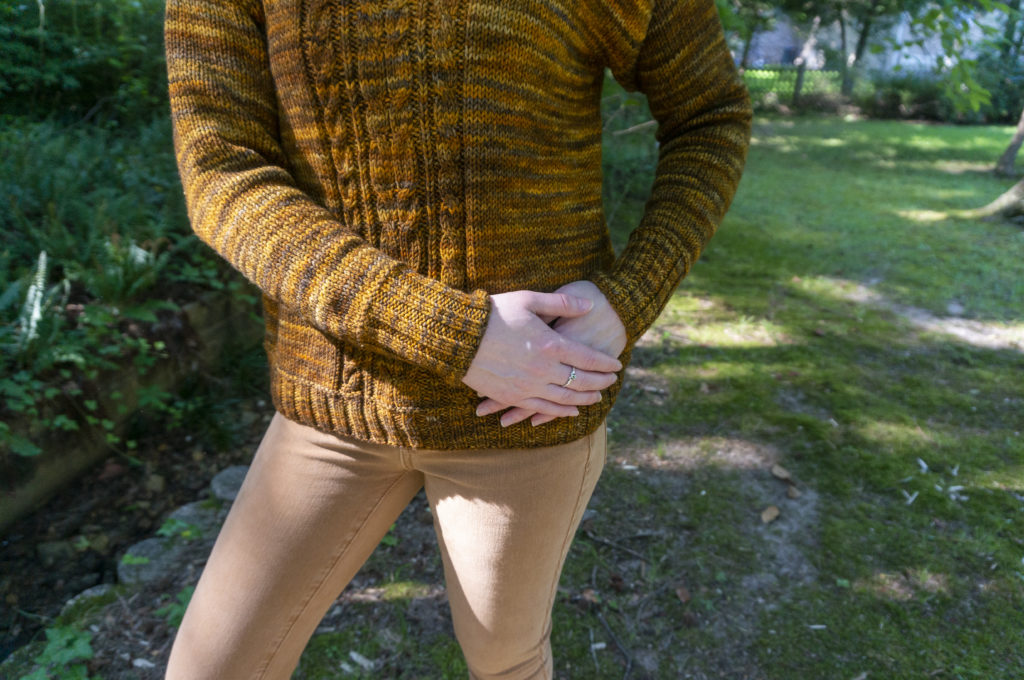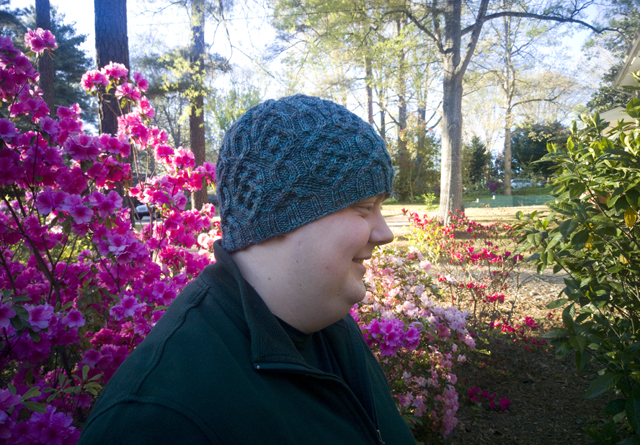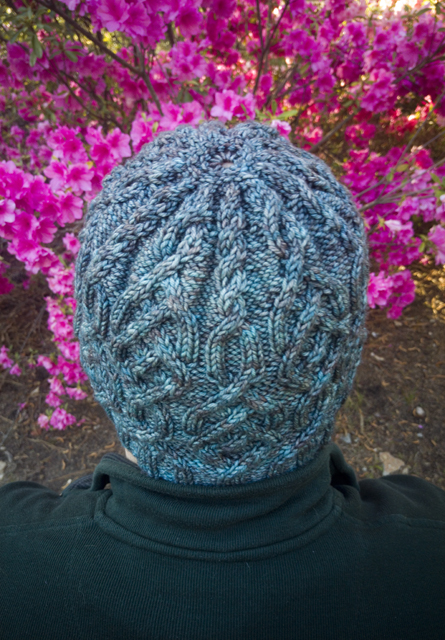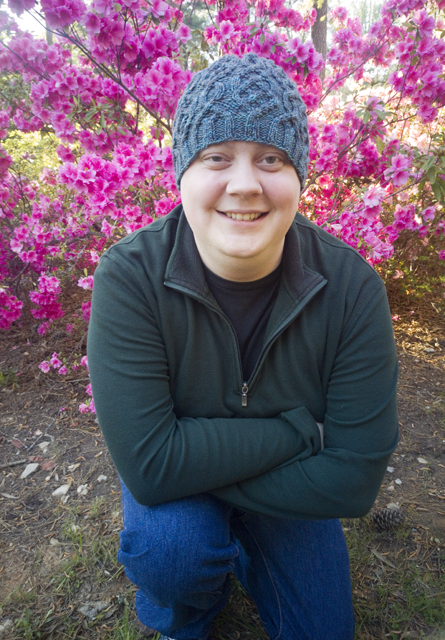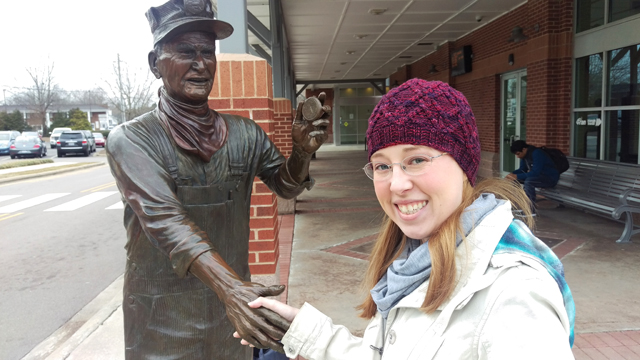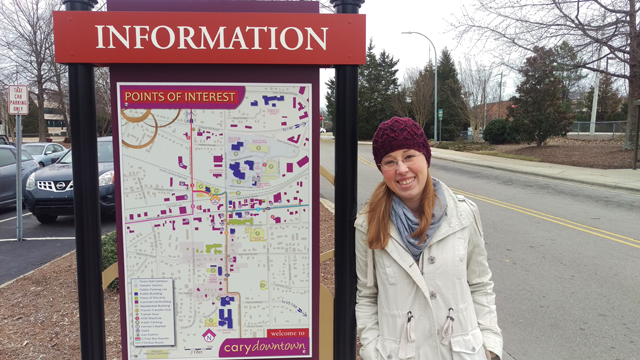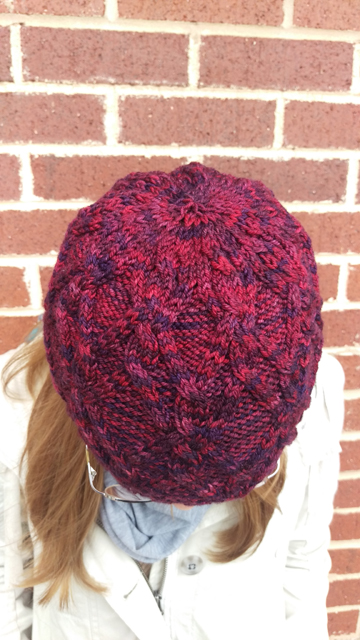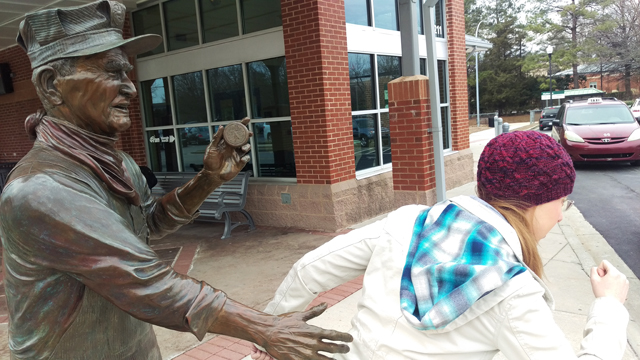In January, Justin and I booked a beach house with several other couples to celebrate a dear friend’s birthday and the start of a new year. It was the first time we’d taken a vacation with anyone besides each other or our families, and it was quite unlike any trip we’d taken before. Rather than scheduling out the five-day weekend, the guest of honor outlined a few activities that were important to him, and then left the rest of the time open for us to do as we pleased.
As a rather creative bunch with a tendency toward introversion, it was the perfect opportunity to read, draw, and knit, surrounded by kindred spirits, but without an obligation to be social, to be on the entire time. If you wanted to reflect and set intentions for the upcoming year, you took your journal out on one of the balconies to write in peace. If you opened up a laptop to watch a comedy special, you might be joined by others who were interested, but you didn’t worry if someone had wandered out for a walk, or was still sleeping in. We cooked for each other, we cleaned up together, we drifted in and out of each other’s orbits as our individual energy levels—our needs for various sorts of companionship—waxed and waned.
It put me in mind of the artists of the past who would spend a month at the seaside, or holed up in a little cottage in woods, puttering away at their art and taking walks and having time every afternoon to read and drink tea. When I’m feeling discouraged about my job or have a project I can’t find the time to get properly stuck into, I envy the freedom they had to structure their lives around making and doing things, to simply pack up and go somewhere else to live their lives for a while.
For my part, I brought more to do than I could have possibly accomplished if I’d spent five days alone doing nothing but my own hand-picked activities. I packed several skeins of yarn and all of my circular needles in case inspiration struck, but as it happened there was only one project I really wanted to work on: this hat.
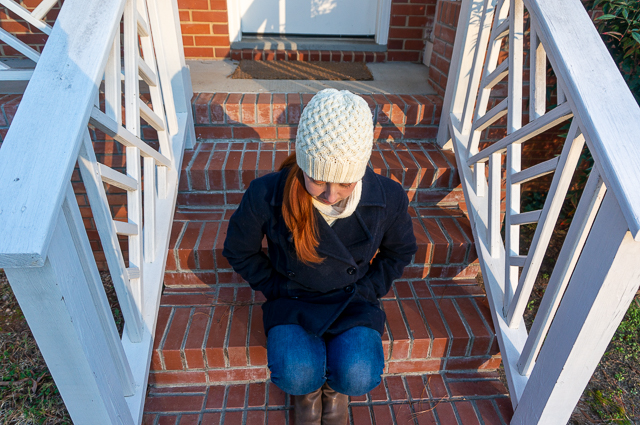
The pattern is Tin Can Knits’ Apple Pie, and the yarn is more Malabrigo Rios in Natural, because I enjoyed using it on my mom’s hat so much that I wanted some for myself. Whereas the original hat pattern conjures the image of a pie fresh from the oven, mine is reminiscent of nothing so much as unbaked pie crust.
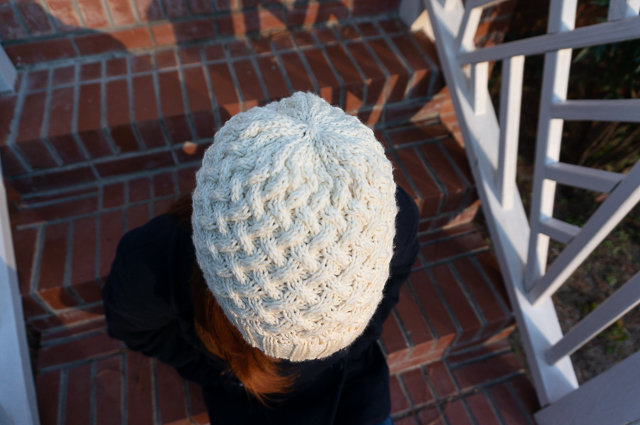
Knitting this hat might possibly be the first time I’ve twisted my cast-on while setting up knitting in the round. Usually the long-tail method makes it easy to avoid that particular foible, but I suppose I wasn’t giving it as much attention as I could while enjoying the opportunity to sit by the ocean in 70-degree weather in January. After not one but two false starts, I was able to complete the doubled brim portion, which is wonderfully squishy and warm and which will no doubt become a feature of future knit hats for me, before we returned home.
Looking back on that time now, I’m struck by how the less-than-idyllic moments of the trip have not been eclipsed by the current situation of a global pandemic, as one might assume, but instead seem to have foreshadowed it in peculiar ways. For instance, there were moments when we all came together to do something fun that had the effect of being intensely alienating for me. Ostensibly we were creating new memories together, but there were all these existing relationships and shared histories and in-jokes too, and though in theory I was being given access to them through this new experience, since I hadn’t been there from the beginning, I could only sort of understand the depth of the humor and revelry, and I felt I couldn’t fully participate.
These same friends and I are now experiencing a common struggle to find ways to create and socialize while limiting our physical contact. This shared experience, which by rights ought to cause us to cleave closer together, has instead left us all adrift in our own personal bubbles of loneliness and quietude. We keep reaching out, trying to connect and relate in meaningful ways, and yet can’t. It should be easier when we’ve all been served up a portion from the same plate of misery, and yet isn’t.
One of my secret desires during the trip was to have one-on-one time with a few of my friends in an effort to get to understand them on a deeper level. As a group we had several thoughtful, provocative, and at times vulnerable conversations, but I never quite found my opening for those more intimate interactions. There were only a few opportunities, but when they did present themselves, I could never quite step off the ledge. Would I ask something too personal? Would I unwittingly offend? Could we have the deeply personal conversations I craved, or would it just be awkward?
I never did find out, and I don’t know if I will. Between January and the start of lockdown in March, we spent more time together, embarked on an ever-widening array of adventures, but never quite gotten close to that place again. Even when we’ve had one-on-one time, there’s this reticence to be completely open. And the pandemic has made it worse. No one wants to admit how sad, or angry, or demoralized they are, because what would be the point? There’s not much any of us can do beyond what we’re already doing. It would just be empty complaining, right? So I don’t really know how my friend who is a nurse is coping, and whenever I ask how my friend who is (was) single is feeling, they always brush off their own negative feelings by saying they’re trying to keep an optimistic outlook and focus on solo pursuits.
I’m reminded of a passage in Ursula K. LeGuin’s The Dispossessed. The protagonist, Shevek, is leaving a regional academic institute to study at a larger, more central one, and his friends throw him a going away party. As the night wears on, only a few people stay up, and they start talking about big ideas, about science and philosophy and “…whether their childhoods had been happy. They talked about what happiness was.” Shevek asserts that suffering is a misunderstanding. That it exists, that it is real, and that we all recognize it when we experience it, but that we misunderstand its purpose. His friends think that pain is merely a warning against physical danger and harm, but serves no psychological or social purpose; Shevek disagrees.
He recounts a time when he witnessed a man who survived an explosion but was horribly burned, burned so badly that he died of his injuries a few hours later. Shevek describes sitting with the man, wanting to provide comfort but having nothing to give—no anesthetic, no doctor, not even touch, which causes the man terrible pain.
“There was no aid to give. Maybe he knew we were there, I don’t know. It didn’t do him any good. You couldn’t do anything for him. Then I saw…you see…I saw that you can’t do anything for anybody. We can’t save each other. Or ourselves.”
“What have you left, then? Isolation and despair! You’re denying brotherhood, Shevek!” the tall girl cried.
“No—no, I’m not. I’m trying to say what I think brotherhood really is. It begins—it begins in shared pain.”
Shevek wonders whether pain is not a thing to fear, but a thing that cannot be entirely avoided, and therefore a thing to get through, to go beyond. He clings to the idea that brotherhood does not exist to alleviate suffering—it can’t—but instead arises out of it.
I think about this passage a lot, particularly when I’m feeling isolated and lonely, when things are especially rough and I worry that I’m not giving my friends what they need or getting what I need in return. We’re all doing our best. Sometimes our best isn’t good enough. But that’s okay. It isn’t the end; it’s the beginning.
